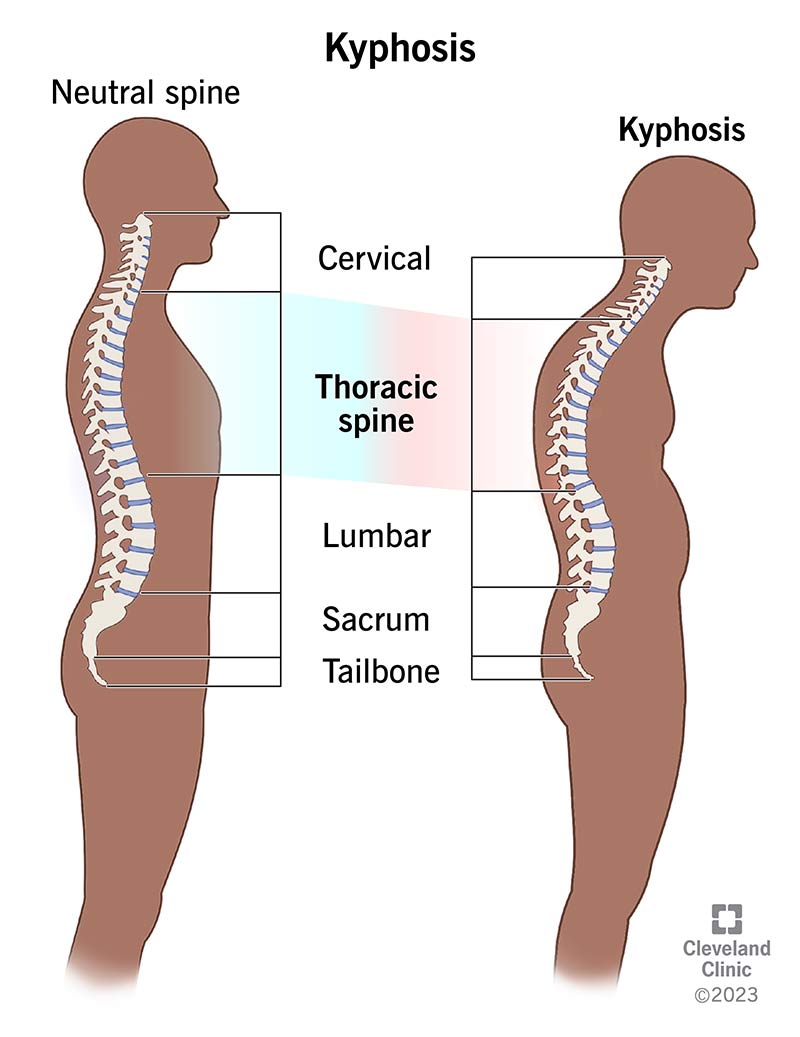A 19 year old man is brought to the emergency department after dislocating his shoulder when he was hit by the top of a helment during an offensive play by the opposing team while playing football. Following treatment of the dislocation, he cannot initiate abduction of hid arm. An MRI of the affected shoulder shows a torn muscle. Which of the following muscles is most likely damaged by the injury?
A: Coracobrachialis
B: Long head of the tricep brachii
C: Pectoralis minor
D: Supraspinatus
E: Teres major
D: Supraspinatus
A 55 year old man is brought to the emergency department because of a 5 day history of severe cough, night sweats, and hemoptysis. A chest X-ray shows tuberculosis of the right lung, with extension into the thoracic vertebral bodies of T6 and T7, producing a "gibbus deformity". Which of the following conditions is most likely to be confirmed by radiologic examination?
A: hyperlordosis
B: hyperkyphosis
C: scoliosis
D: spina bifida
E: osteoarthritis
B: hyperkyphosis
A 45 year old man is brought to the hospital for a 2 week history of severe back pain in the back and lower limb. Physical examination shows slight bilateral loss of sensation of the skin over the lower limbs. An X-Ray of the spine shows spinal cord stenosis in the lumbar region. Which of the following conditions is most likely to be confirmed on MRI?
A: Hypertrophy of supraspinous ligament
B: Hypertrophy of interspinous ligament
C: Hypertrophy of ligamentum flava
D: Hypertrophy of anterior longitudinal ligament
E: Hypertrophy of nuchal ligament
C: Hypertrophy of ligamentum flava

What is the deformity that has an exaggeration of thoracic curvature in the sagittal plane, often caused by degeneration of the anterior aspect of the vertebral bodies?
A: Scoliosis
B: Lordosis
C: Herniated Disc
D: Kyphosis
D: Kyphosis
a 32 year old man is brought to the emergency department because of a 3 hour history of severe back pain radiating to the posterior aspect of his right thigh and leg. He has been an elite athlete and he was weight lifting heavy weights during an intense training session when the pain appeared. His vitals are within normal limits. Physical exam shows no motor weakness or sensory loss in his lower limbs. Reflexes are fully intact bilaterally in upper and lower limbs. MRI of the lumbar spine shows a ruptured L4-L5 intervertebral disc. Which of the following nerves is most likely affected?
A: L3
B: L4
C: L2
D: L5
E: S1
D: L5

A 20 year old hiker is brought to the emergency department 45 minutes after he sustained a deep puncture wound to his back during a fall. Physical examination shows a lesion between the trapezius and latissimus dorsi muscles on the right lateral side of his back. Physical examination shows weak adduction and medial rotation of his arm. Which of the following muscles is most likely injuried?
A: teres minor
B: tricep brachii
C: supraspinatus
D: infraspinatus
E: teres major
E: teres major
A 3 year old boy is brought by his mother to the emergency department with severe headache, high fever, lethargy, malaise, and confusion. He has a history of multiple ear infections. His temperature is 104 F. A diagnosis of bacterial meningitis is suspected. Further evaluation with lumbar puncture and laboratory analysis of cerebral spinal fluid confirms the diagnosis. Which of the following vertebral levels is most appropriate location for lumbar puncture?
A: T12-L1
B: L1-L2
C: L3-L4
D: L4-L5
E: L5-S1
D: L4-L5
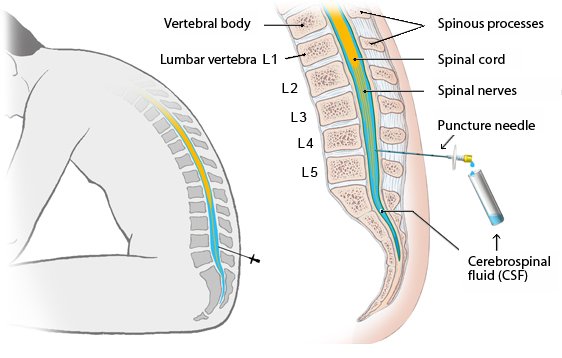
A 27 year old man is brought to the emergency department after being involved in a motor vehicle collision. His vital signs are within normal limits. Physical examination shows weakness during medial rotation, extension, and adduction of the humerus. His radial pulses are symmetrical and normal. Which of the following nerves is most likely injured?
A: Thoracodorsal
B: Axillary
C: Dorsal scapular
D: Accessory
E: Radial
A: Thoracodorsal
The lumbar triangle is bound by the latissimus dorsi, external obliques, and iliac crest. Due to the gap in muscle tissue on rare occasions, what injury occurs?
A: Herniated disc
B: Back Sprains
C: Lumbar hernias
D: Back Strains
C: Lumbar hernias
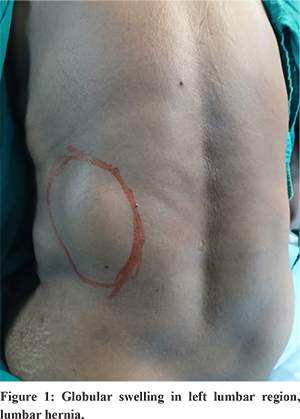
A 68 year old man is brought to the hospital due to severe back pain. The patient says the pain began insidiously 4 months ago. He has no history of recent trauma or strenuous activities. Physical examination shows muscular strength of 5/5 and sensory findings within normal limits. An X-ray of the spine shows severe osteoporosis of the vertebral column, with compression fractures to vertebrae L4 and L5. Which of the vertebrae are most likely fractured in this patient?
A: spinous process
B: Vertebral bodies
C: Transverse process
D: Superior articular processes
E: Intervertebral disc
B: Vertebral Bodies

A 22 year old man is brought to the emergency department after he was thrown through a glass wall in a fight 2 hours ago. An X-ray of the thorax shows that the lateral border of his right scapula is shattered. Physical examination shows difficulty rotating his arm. laterally. He has no loss of sensation in his right upper limb. Which of the following muscles is most likely injuried?
A: teres major
B: infraspinatus
C: latissimus dorsi
D: trapezius
E: supraspinatus
B: infraspinatus
A 65 year old man is brought to the emergency department because of severe back pain and the weakness in lower limb motions, especially pointing his left toes. Physical examination shows weakness in standing on his tiptoes on his left leg. Right lower limb shows no motor strength deficits. The patient has numbness on the lateral side of the left limb and foot. Sensation is intact on the right. An MRI of his spine shows compression of nerve endings at the intervertebral foramen between L5 and S1. Which of the following structures is most likely responsible for this space occupying lesion?
A: Annulus fibrosus
B: Nucleus pulposus
C: Posterior longitudinal ligament
D: Anterior longitudinal ligament
E: Ligamentum flavum
B: Nucleus pulposus
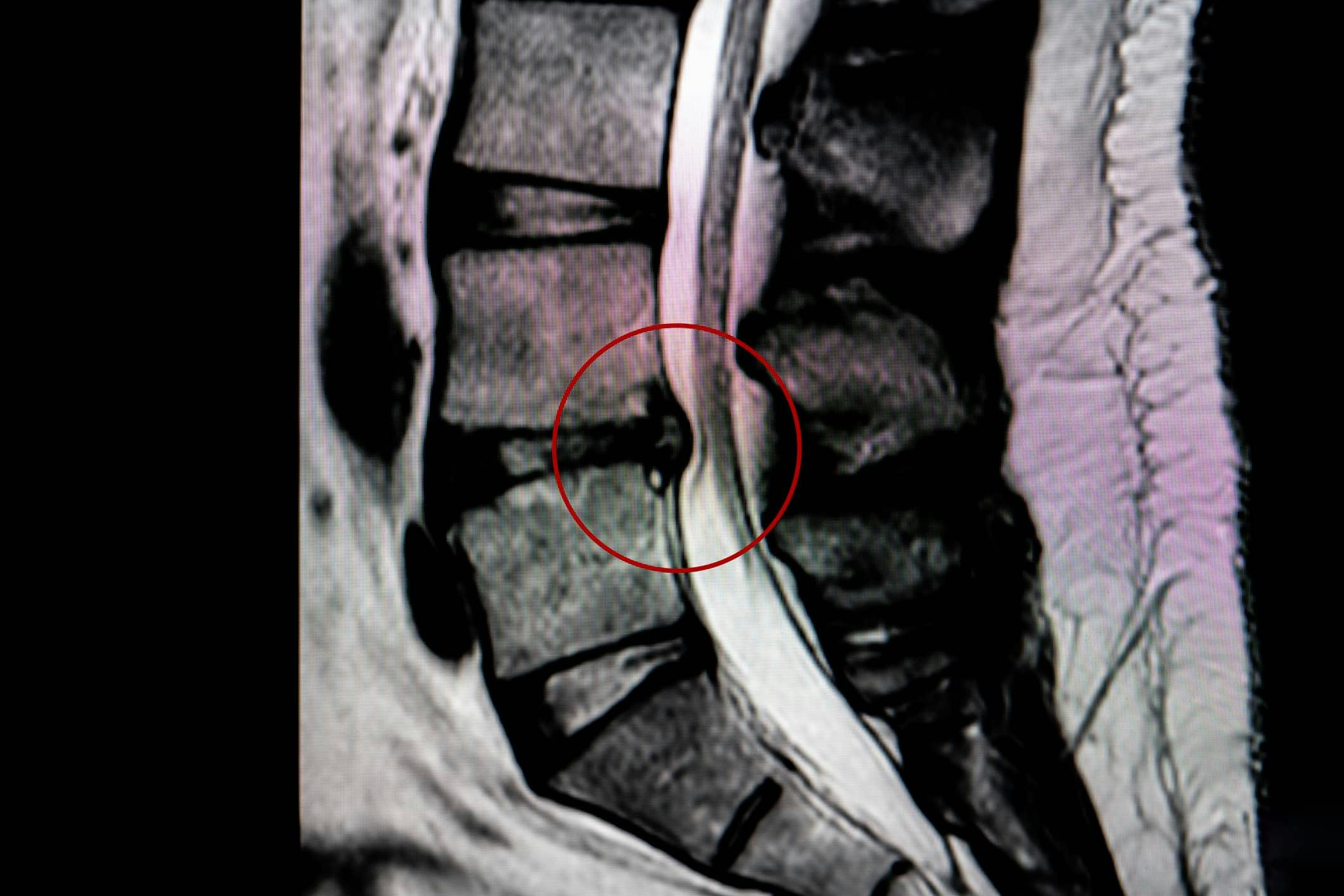
A 1 year old girl is brought to the physician by her mother for a routine examination. The mother says she did not always take her prenatal vitamins as advised to. Physical examination shows a dimpling of the skin in the midline of the lumbar region with a tuft of hair growing over the dimple. Which of the following is the most likely diagnosis?
A: Meningomyelocele
B: Meningocele
C: Spina bifida occulta
D: Spina bifida cystica
E: Rachischisis
C: Spina bifida occulta
What space is Spinal Anesthesia injected into?
A: Epidural Space
B: Subarachnoid Space
C: Dura Mater
D: Dural Sac
B: Subarachnoid Space

A 35 year old man is brought to the emergency department after being involved in a motor vehicle collision. Physical examination shows the scapula retracted laterally on the affected side. An X-ray of the neck shows an injury to the dorsal surface of the right scapula. Which of the following nerves is most likely injured on that side?
A: Axillary
B: Long Thoracic
C: Dorsal Scapular
D: Greater Occipital
E: Suprascapular
C: Dorsal Scapular
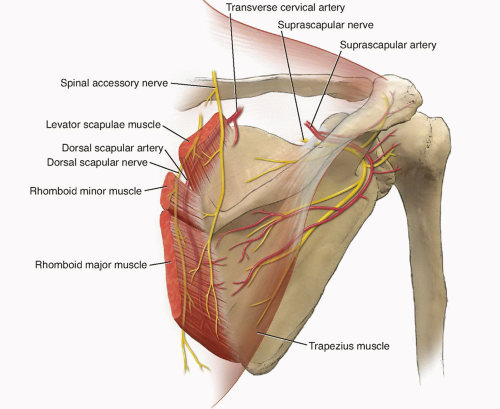
A 62 year old man is brought to the emergency department after a severe motor vehicle collision resulting in a whiplash injury. Physical examination shows no neurological deficits. An MRI of the head and neck shows several hairline vertebral fractures in the cervical region impinging upon the dorsal rami of the same levels. Two months after injury the patient recovers well, but there is still some weakness in the function of a muscle. Which of the following muscles is most likely affected?
A:Rhomboid minor
B:Levator scapulae
C:Rhomboid major
D: Semispinalis capitis
E: Latissimus dorsi
D: Semispinalis capitis
A 16 year old girl is brought to the physician for a routine physical examination prior to the beginning of her school year. She has no history of major medical illnesses and receives no medication. Her vital signs are within normal limits. Physical examination shoes one shoulder is higher than the other. When she asked to bend forward at the waist to touch her toes a posterior bulging of the ribs on the right side is shown. Which of the following is the most likely diagnosis?
A: Kyphosis
B: Spondylosis
C: Lordosis
D: Spondylolisthesis
E: Scoliosis
E: Scoliosis
a 45 year old women comes to the physician because of a 6 year history of discoloration of her finger and toes in low temperatures due to chronic vasospasm. She was diagnosed with scleroderma and Raynaud disease at the age of 39. Relief from the symptoms in the hands would require surgical division of which of the following neuronal elements?
A: Lower cervical and upper thoracic sympathetic fibers
B: Lower cervical and upper thoracic ventral roots
C: Lower cervical and upper thoracic dorsal roots
D: Lower cervical and upper thoracic spinal nerves
E: Bilateral accessory nerves
A: Lower cervical and upper thoracic sympathetic fibers
Back pain is one of the most common health problems experienced by adults. Which type of back injury involves tears in the muscle tissue, commonly in the postural muscles of the erector spinae?
A: Back Strains
B: Back Sprains
C: Herniated Disc
D: Fractures
A: Back Strains
A 3 year old boy is brought bt his mother to the emergency department with severe headaches, high fever, lethargy, malaise, and confusion. He has a history of multiple middle ear infections. His temperature is 40.1 C. A diagnosis of bacterial meningitis is suspected. Further evaluation with lumbar puncture and laboratory analysis of the cerebrospinal fluid confirms the diagnosis. Which of the following external landmarks is the most reliable to determine the position of the L4 vertebral spine?
A: the inferior angles of the scapulae
B: the highest points of the iliac crest
C: the lowest pair of ribs bilaterally
D: The sacral hiatus
E: the posterior inferior iliac spines
B: the highest points of the iliac crest

A 43 year old man who is a construction worker is brought to the emergency department after a fall from a two story building. Physical examination shows loss of all sensation in his lower limbs. An MRI of the cervical spine shows a crushed spinal cord at C6 vertebral level. Which of the following muscles will most likely be paralyzed?
D: Latissimus dorsi
Thoracodorsal nerve is affected (C7-C8)
A 30 year old women is admitted to the hospital because of 3 month history of thoracic back pain and persistent cough. She says that the cough is getting progressively worse. Laboratory studies showed a positive PPD akin test after 48 hours. An X-ray of the chest shows signs of tuberculosis in the lungs and dissemination in the thoracic vertebrae. Which of the following will most likely be a long term effect in the thoracic spine if this condition is left untreated?
A: Spondylolysis
B: Spondylolisthesis
C: Herniation of intervertebral disc
D: Vertebral collapse
E: Weight fracture
D: Vertebral collapse
A 64 year old man is brought to the emergency department because of a 4 day history of painful rash and skin eruptions that are localized entirely on one side of his body, closely following the dermatome level of the spinal nerve C7. The patient was diagnosed with a herpes zoster viral infection known as "shingles". In which of the following structures has the virus most likely proliferated to cause the patients current conditions?
A: The sympathetic trunk
B: The dorsal root ganglion of the C7 spinal nerve
C: The lateral horn of the C7 spinal cord segment
D: The posterior cutaneous branch of the dorsal ramus of C7
B: The dorsal root ganglion of the C7 spinal nerve
What deformity is described as an abnormal amount of lateral curvature of the vertebral column in the coronal plane, often accompanied by rotation of the vertebrae and ribs to muscular weakness or developmental anomalies?
A: Kyphosis
B: Lordosis
C: Scoliosis
D: Herniated Disc
C: scoliosis

A 39 year old man is brought to the emergency department with severe neck pain after a whiplash injury, sustained when his car was struct from behind. He was placed in a cervical collar and anesthetic injection was administered. Imaging studies show trauma to the lying on the anterior surface of the cervical vertebral bodies. Which of the following ligament is most likely disrupted?
A: Anterior longitudinal ligament
B: Ligamentum flavum
C: Nuchal ligament
D: Posterior longitudinal ligament
E: Transverse cervical ligament
A: Anterior longitudinal ligament

